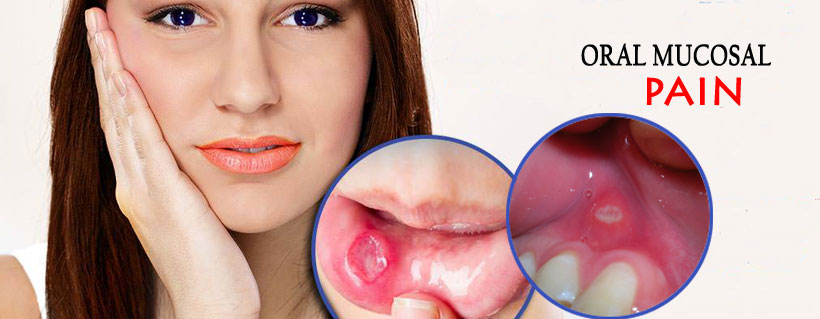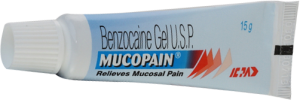Menu

Date: 16th Dec.,2016
After dental pain, one of the common causes of oral pain is that of mucosal origin. As has been rightly said, “One realizes the importance of something only when one loses it.”, and so is the case with the oral mucosal integrity. The oral cavity, having many functions, is of paramount importance to have a healthy, intact mucosa. If the mucosa is breached, it leads to intense soreness and pain.
Given the complex oral environment, etiology for oral mucosal pain could be varied, ranging from simple local factors to complex systemic ones. Probable etiologies could be traumatic damage to the epithelium, immune reactions, immune deficiencies, infections, nutritional deficiencies, GI disorders, and malignancies.
As clinicians, we have two responsibilities – first, to try and provide immediate symptomatic relief, and second, to accurately pinpoint the etiology and treat it.
Depending on etiology, mucosal pain can be divided into the following clinical pictures:
Causes for epithelial thinning could be:
-Systemic: Such as, Vitamin B deficiency, anemia or folic acid deficiency.
-Local: Such as, OSMF, lichen planus, speckled leukoplakia, erythroplakia or geographic tongue.
Given the exhaustive list of etiologies, to reach a diagnosis, a systematic approach based on a comprehensive history and thorough examination is recommended. Certain oral manifestations may have systemic features which may need to be addressed. The following signs can suggest a systemic involvement:
Additional investigations may be needed to arrive at a diagnosis, these could be:
An oral ulcer presents with uniform clinical symptoms and appearance. This makes it important for us to use patient history and subtle clues in clinical presentation for differentiating between the various types of ulcers.
A system based on duration (acute or chronic), number (single or multiple) and clinical behaviour (healing or persistent), helps classify lesions into broad categories.
Causes for Acute Ulcers
Some common causes for single or multiple ulcers are trauma, aphthous stomatitis and herpes virus. However, tuberculosis, HIV infection and fungal infection can also cause these ulcers. Apthous ulcers usually heal within a week, with major aphthae persisting for 2 weeks or more, traumatic ulcers would heal once the offending agent is removed.
As a note of caution, if an ulcer persists for more than 3 weeks after removal of alleged offending agent, it should be viewed with suspicion, and to rule out malignant changes, a biopsy should be performed.
Causes for Chronic Ulcers
Multiple chronic ulcers can cause due to conditions like lichen planus, pemphigus or pemphigoid, immune reactions, blood dyscrasias or medication. Whereas, a single chronic ulcer can be caused due to chronic trauma, chronic infections like tuberculosis, syphilis, fungal infections, or malignancy.
Having established a provisional diagnosis, the next priority is to provide symptomatic relief while addressing the etiologic agent. One of the means to palliate the mucosal pain caused by various erosions, inflammations and ulcerations is by using topical anaesthetic agents like Mucopain.
Mucopain is composed of 20% benzocaine with low water solubility. This prevents absorption into the body, thereby limiting adverse effects. This coupled with a rapid onset of action helps reduce mucosal pain for the patient, facilitating intake of food. However, prolonged use should be avoided to prevent local allergic reactions.
To summarise, mucosal pain apart from causing discomfort could be the manifestation of a more serious local or systemic cause. Our responsibilities as clinicians is to provide symptomatic relief in the form of topical anaesthetics, recommend maintaining good oral hygiene, treating the underlying cause, and eliminating the etiologic factors. If there is presence of extraoral features, atypical ulcers or other oral lesions, a specialist referral can prove beneficial for the patient.

References


| PRODUCTS | QTY | PRICE | VALUE in INR |
|---|
| PRODUCTS | QTY | PRICE | VALUE in INR |
|---|
One thought on “Oral Mucosal Pain – Causes, Diagnosis and Management”
Very nice style and good written content, nothing at all else we require : D.